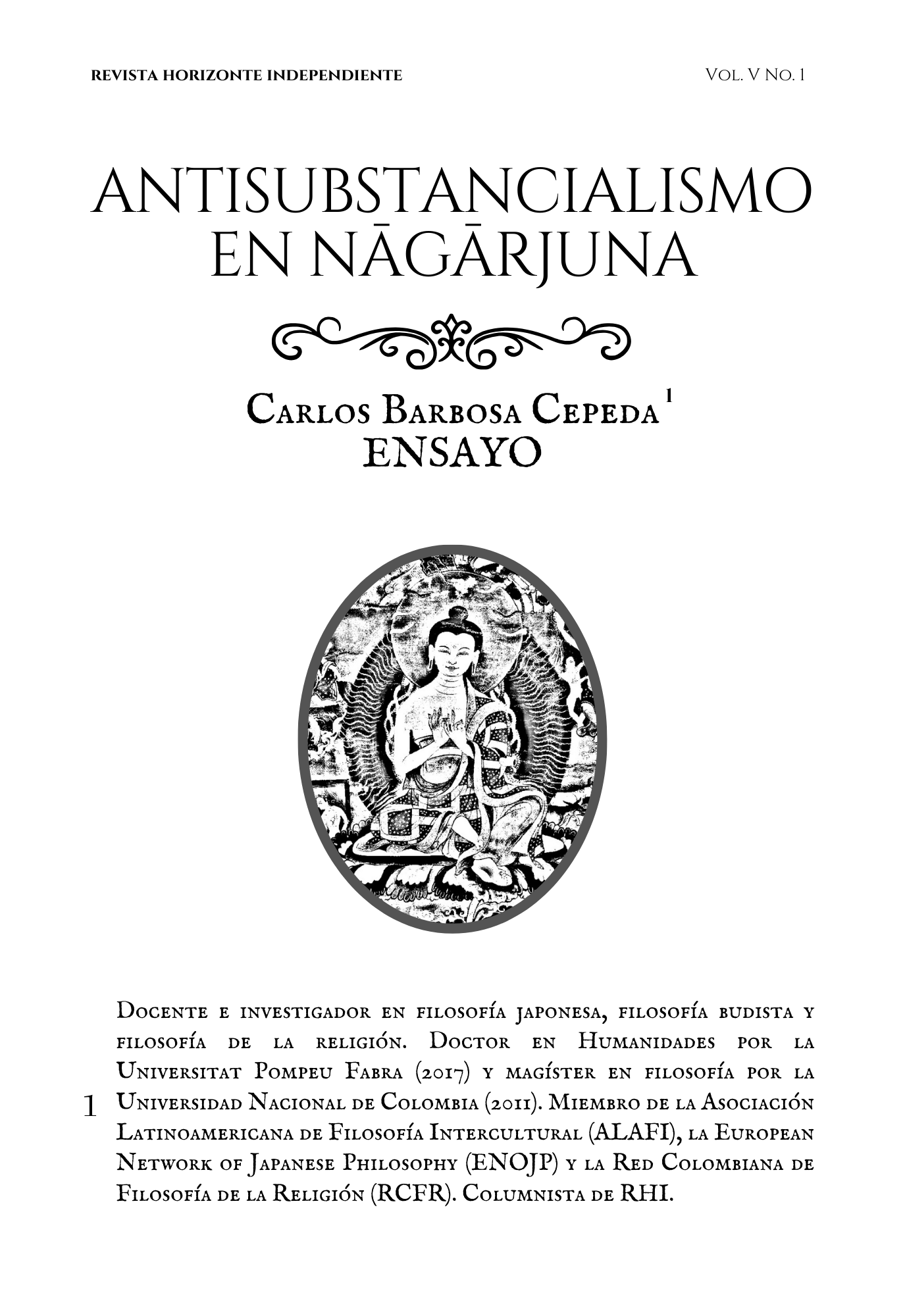Antisubstantialism in Nāgārjuna
Keywords:
antisubstantialism, metaphysics, svabhāva (own nature), śūnyatā (emptiness), upāya kauśalya (skill in means), language , realityAbstract
Perhaps the most profound and significant criticism of substantialist metaphysics in antiquity comes from Nāgārjuna. Even though understanding his argument requires to grasp to whom his critique is directed, it is still possible to show that Nāgārjuna's negative arguments go beyond the intellectual environment of classical India: they force us to revise the usual ways of thinking about the relationship between language and reality in a very different direction from substantialist metaphysics. Still, we can use language meaningfully as long as we understand it as an instrument to facilitate the experience of truth, never as a container for it.
References
Nāgārjuna. [VV] Abandono de la discusión [Vigraha vyāvartanī]. Tr. Juan Arnau Navarro. Madrid: Siruela, 2006.
Nāgārjuna. Fundamentos de la vía media [Mūlamadhyamakakārikā]. Tr. Juan Arnau Navarro. Madrid: Siruela, 2004.
Nāgārjuna. [MMK] Mūlamadhyamakakārikā of Nāgārjuna: The Philosophy of the Middle Way. Tr. David J. Kalupahana. Delhi: Motilal Barnasidass, 1999.
[MN 63] “Cūḷamālunkya Sutta: The Shorter Discourse to Mālunkyāputta”. The Middle Length Discourses of the Buddha: A Translation of the Majjhima Nikāya, tr. Ñāṇamoli Bhikkhu y Bhikkhu Bodhi. Boston: Wisdom, 2009. 533-536.
[MN 22] “Alagaddūpama Sutta: The Simile of the Snake”. The Middle Length Discourses of the Buddha: A Translation of the Majjhima Nikāya, tr. Ñāṇamoli Bhikkhu y Bhikkhu Bodhi. Boston: Wisdom, 2009. 224-236.
[SN 56.31] “The Simsapa Grove”. The Connected Discourses of the Buddha: A Translation of the Samyutta Nikāya, tr. Bhikkhu Bodhi. Boston: Wisdom, 2000. 1857-1858.
Arnau, Juan. La palabra frente al vacío: Filosofía de Nāgārjuna. México: Fondo de Cultura Económica, 2005.
Arnau, Juan. “Introducción”. Fundamentos de la vía media. Madrid: Siruela, 2004. 11-45.
Chandrakīrti. [Prasannapadā] Lucid Exposition of the Middle Way. Tr. Mervyn Sprung. Boulder: Prajñā, 1979.
Ganeri, Jonardon. “The Hindu Syllogism: Nineteenth-Century Perceptions of Indian Logical Thought”. Philosophy East and West, vol. 46, n.º 1 (1996): 1-16.
Hume, David. Investigación sobre el conocimiento humano. Tr. Magdalena Holguín. Bogotá: Norma, 1992.
Jaspers, Karl. Los grandes maestros espirituales de Oriente y Occidente. Tr. Elisa Lucena, Pablo Simón. Madrid: Tecnos, 2012.
Said, Edward. Orientalismo. Tr. María Luisa Fuentes. Barcelona: Debolsillo, 2003.
Williams, Paul, Anthony Tribe y Alexander Wynne. Pensamiento budista: Una introducción completa a la tradición india. Tr. Agustina Luengo. Barcelona: Herder, 2013.



















